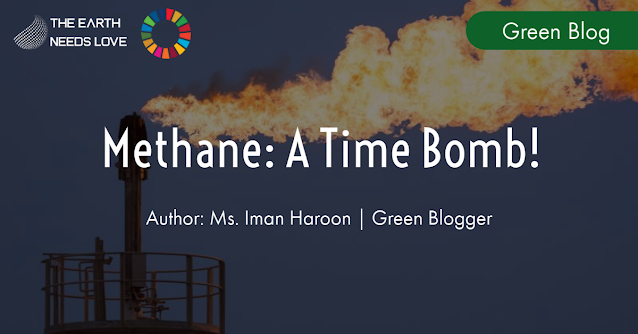Methane Vs Carbon Dioxide:
What major component of greenhouse gases comes to mind when you hear the
term "greenhouse gas"? Because of its more deleterious effect, I'm quite
sure it's carbon dioxide. You are not to blame if Methane cannot have equally
lethal effects than you believe. Now, to clarify the concept, both Carbon Dioxide
and Methane are major contributors to greenhouse gas emissions, but it is worth
noting that carbon dioxide, as opposed to methane, has a higher concentration
but a lower warming potential.
While Carbon Dioxide is often portrayed as the villain of greenhouse
gases, Methane is around 30 times more effective as a heat-trapping gas than
carbon dioxide. Methane can have a significant impact on climate because it is
a powerful greenhouse gas—about 28 times stronger than carbon dioxide over a
100-year timescale, and more than 80 times more potent over a 20-year
timescale.
When it comes to concentration, there's only around 1,800 parts per
billion of Methane in the atmosphere, which is roughly the same as two cups
water in a swimming pool. This is around 200 times less than Carbon Dioxide in
the atmosphere. However, because Methane's molecular structure is so powerful
at trapping heat, even a small increase in Methane in the atmosphere can have a
significant impact on how much and how rapidly the globe heats.
Methane in the Arctic:
In the Arctic, there are two probable methane sources. Methyl clathrate
is the first source of methane. Methyl clathrates are methane molecules that
have formed ice crystals. They can occur deep below the Earth or beneath the
sea, but only under very specific conditions, like as high pressure and low
temperature. The ice that holds the methane will break apart if the temperature
or pressure changes, allowing the methane to escape.
Organic debris frozen in permafrost is another significant source of
methane in the Arctic. Permafrost has a large amount of carbon in its
biological materials. It's made up of thousands of years' worth of dead plants
and animals frozen deep in permafrost. It will persist in the permafrost as
long as the organic matter remains frozen. It will, however, decompose if it
thaws, releasing methane into the atmosphere.
Methane Bomb in Siberia:
In latest years, climate scientists have warned that thawing permafrost
in Siberia might be a slow detonating "methane time bomb." Warming
temperatures in Russia's far north are releasing large amounts of methane,
according to a peer-reviewed study based on satellite imagery and an assessment
by an international agency. Large levels of methane were identified from
exposed limestone in satellite pictures of a newly unexplored region in
Siberia. The emissions were caused by a heat wave in 2020.
Temperatures in the basin climbed approximately 11 degrees Fahrenheit
above average in 2020, causing old methane deposits to be released from the
limestone. The Climate Crisis Advisory Group (CCAG) has issued a statement
calling for a "global state of emergency" as temperatures in Siberia
and other Arctic regions continue to rise. Permafrost covers 65 percent of
Russian territory, but it is rapidly melting.
Warming temperatures in the Arctic may be driving the region toward an
"irreversible" tipping point, resulting in the emission of methane
and other pollutants, as well as deteriorating infrastructure in Siberia,
including dams and a nuclear power plant. Scientists have long suspected that
global warming could trigger a "methane bomb" in the Arctic, with
massive amounts of methane released rapidly from thawing permafrost and
undersea methane hydrates. An emission of this magnitude could result in
extinction-level warming!
About the Author: Iman Haroon is presently a student of Bachelor of
Environmental Science at the Government College Women University, Sialkot.
She's a green blogger who is volunteering to write for TENL in order to raise
environmental awareness.

0 Comments